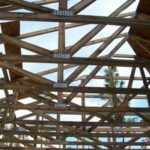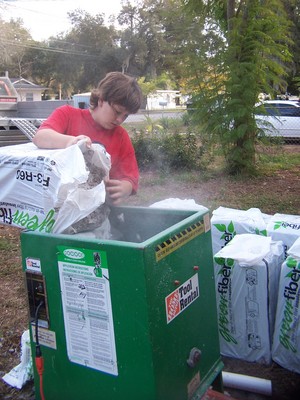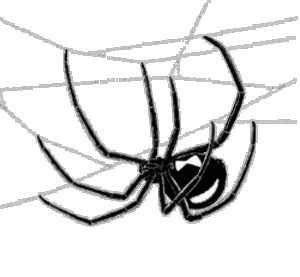Attic condensation is a topic that few homeowners know anything about. Many never discuss or even investigate to see if their own homes are being affected, but allowing condensation to build up in the cavity above your ceiling can cause significant damage to your roof trusses and rafters, causing very costly repairs. Insulation in your attic becomes less effective once moisture settles into it, causing additional heat loss from your home in the winter and loss of cool air during the summer, as well as providing a breeding ground for bacteria. Moisture penetrating your roof trusses and rafters over a period of time will cause them to rot and will decrease their strength and effectiveness and will eventually need to be replaced for your attic to have continued support.
How do you know if you have an attic condensation problem? There are some obvious signs to look for, which should spring your investigation into action if you notice these in your own home.
First, do you have a “more than normal” amount of icicles hanging from the overhangs and eaves of your roof edges during the winter? Are there tiny droplets of water hanging from the roof boards from inside the attic? Is there frost present in your attic windows or in the attic itself? In the summer, do you see water stained areas on the roof boards or near where the chimney comes through the roof? Is there mold present? Any of these signs are enough cause to have a full potential damage inspection of your attic performed and a plan put in place in your home to prevent any further compromising of the structural stability of the roof.
The primary cause of a moisture problem in your attic is the transfer of heated, moist air, from the living quarters in your home, to the unheated attic area. Obviously, the majority of this problem occurs in the winter time, when your home is being heated and the attic area is freezing cold.
Warm, heated, moist air can escape into your attic in many ways that are not realized by the homeowner. The first step in decreasing attic condensation is to decrease the humidity level in the living area of your home.
Bathroom exhaust fans are often vented directly into the attic, which is an expressway for that steam from your hot shower to get into your attic. In the winter, when the warm steam meets the cold attic air, droplets of moisture begin to form on the surfaces of the insulation and wood structure. Exhaust fans should always be vented outside. The same rule applies to clothes dryer vent systems. They should never be vented inside the home, but always to the exterior, so that the warm air and moisture can escape.
Kitchen exhaust fans are normally vented into the attic as well. Did you ever notice how much steam is produced when you boil a pot of water? It seems like the perfect solution to switch on the exhaust fan to draw in the steam and eliminate it, but you are just displacing the steam and moist air into the attic.
Vent all of your heaters to the outdoors as well. Heaters release water vapors into the air and they aren’t able to escape your home unless they are vented to the outdoors. Consider opening a window if you are currently using a heater that is not vented.
Don’t use a humidifier in your home unless a family member’s health warrants the use of one. Humidifiers are designed to introduce moisture into the air, which is exactly what you need to prevent, in order to keep attic condensation to a minimum.
Make sure that your water heater is not installed in the attic. During the summer months, this should not pose a problem, but during the winter, the cold attic air surrounding the warm water tank will produce moisture droplets almost instantly all during the winter season.
Inspect around ceiling light fixtures to see if there are cracks or holes that will allow warm air to escape into the attic. Inspect drywall for holes as well, and patch if necessary. Make sure the pull-down attic stairs are sealed and a board is in place above the attic entrance to prevent further heat loss.
Routinely check to make sure your gutters are cleaned out and free of leaves and other debris. Gutters need to drain properly to provide a quick avenue for rain water and melting snow to be transported away from your roof.
Confirm that your attic has the adequate level of insulation for your climate. This step will not only prevent heat loss in the winter, but cooling loss in the summer, as well as decrease your utility bills.
Proper ventilation of your attic area will replace warm air with cold outside air, keeping it cooler and helping to draw out any heat that does escape to the attic before it can turn into water droplets on your roof boards and insulation. According to HGTV.com, calculate the total square footage of attic floor space you have, divide that figure by 150, and this new number is the total square footage of free venting your attic needs.
Most homeowners are not educated in home construction techniques, and therefore, a trained professional may be necessary to help perform any of the steps outlined in this article.
Source:
Mark Pierce
“Causes and Cures of Attic Condensation and Roof Ice Damming Problems”
Cornell University Cooperative Extension




